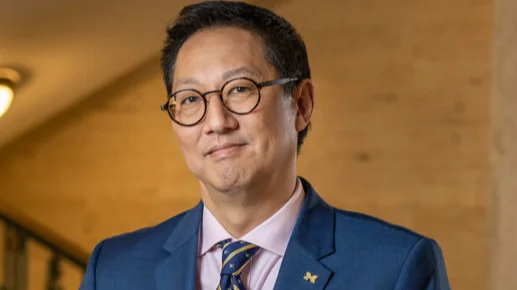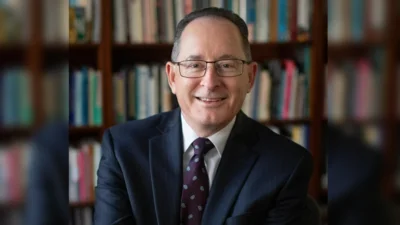Santa J. Ono, Ph.D. President at University of Michigan - Ann Arbor | Official website
Santa J. Ono, Ph.D. President at University of Michigan - Ann Arbor | Official website
Experts from the University of Michigan Institute for Firearm Injury Prevention are offering insights following a recent mass shooting at a church in Michigan. The experts are available to discuss firearm injury prevention, public policy, and how traumatic events affect children.
Justin Heinze, associate professor of health behavior and health equity at the School of Public Health and co-director of the National Center for School Safety, emphasized the importance of focusing on prevention and recovery after such incidents. “Following another tragic incident, we must turn our attention back to prevention while thinking about the recovery process,” he said. “Over the past decade, we have witnessed an increase in the number and severity of these types of tragic incidents with each incident having devastating impacts on families and the communities that surround them. These tragedies are a reminder of the urgent need to address the problem of firearm injury using comprehensive data-driven solutions, especially those that focus on ways we can prevent these devastating incidents from occurring in the first place.”
April Zeoli, associate professor of health management policy, leads research on extreme risk protection orders (ERPOs), which allow for temporary removal of firearms from individuals deemed a risk to themselves or others. She noted findings from her study involving 7,000 cases across six states: “We found that roughly 10% of extreme risk protection order petitions were filed due to threats to shoot at least three people,” she said. “By making sure that the people who make these threats do not have access to firearms, we may be able to prevent mass shootings.”
To help residents understand Michigan’s new ERPO law, the institute has launched an ERPO toolkit with resources about filing procedures and policy implementation.
Zeoli also addressed variations in firearm policies across states: “Research has shown that well-implemented firearm policy that is based on evidence-based risk factors can be effective in reducing all types of firearm injury,” she said. “However, there is a patchwork of firearm policies in the United States in which some states have evidence-based firearm policies while others do not. The outcome of this is that the level of protection citizens have from gun violence may depend, in part, on in which state they live.”
Elyse Thulin, research assistant professor at the institute, studies factors increasing risks for firearm-related injuries among adolescents and young adults. Her work includes evaluating student-submitted tips through an anonymous statewide reporting system funded by federal agencies. Thulin highlighted technology’s role: “We need to continue to increase the focus on firearm injury prevention by identifying key aspects underlying this public health problem and developing and implementing evidence-based solutions,” she said. “One of the strategies we have seen to be significantly impactful is technology-based interventions, like anonymous reporting systems. These systems can get resources to the person in need and prevent escalation and a more severe crisis by providing a space for individuals to share information without fear of retribution.
“Our focus should continue to be on achieving our common goals of decreasing firearm death and injury, and through technology-based interventions like confidential, or anonymous, reporting systems, we can identify early warning signs. These measures are critical when discussing solutions to this preventable societal challenge.”
Rebeccah Sokol, assistant professor of social work at U-M’s Institute for Firearm Injury Prevention who researches youth trauma exposure related to gun violence, spoke about supporting young people after such events: “After tragic incidents like mass shootings, we need to focus on what we can do for young people in our communities, to provide consistency and structure and to keep open lines of communication,” she said. “By ensuring youth have a safe and trusted space to check in, we are letting them know they can come to us whenever they are ready. Knowing they have someone they can come to on an ongoing basis is critical.”
“Everyone responds to trauma differently so it is important to identify where the person or community is at and adjust support and resources accordingly. Whether it is parents at home, school communities or health care providers conversation avenues should be open and regularly offered.”




 Alerts Sign-up
Alerts Sign-up